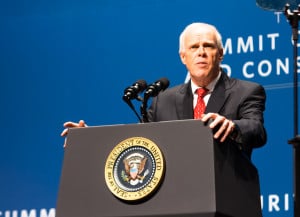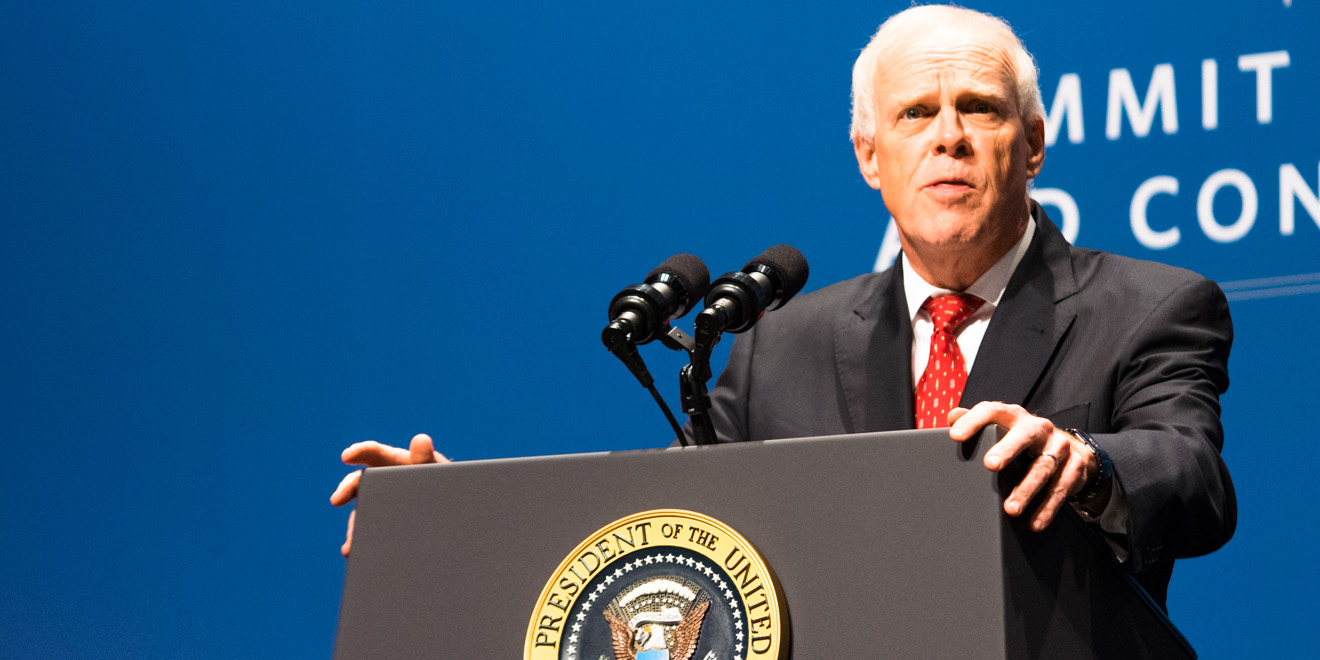John Hennessy announced that he plans to step down as Stanford’s president, informing both the Board of Trustees and the Faculty Senate earlier today.

Hennessy will officially depart in summer 2016 after more than 15 years as the University’s president.
Hennessy has held major leadership roles at Stanford for more than two decades. He served as chair of the Department of Computer Science from 1994 to 1996 and became the Dean of the School of Engineering in 1996. In 1999, Hennessy was named provost, the University’s chief academic and financial officer, before being inaugurated as the University’s 10th president in October 2000.
He did not specify future plans, but has expressed interest in being involved with teaching, research and higher education.
“The time has come to return to what brought me to Stanford — teaching and research,” Hennessy told the Faculty Senate. “Maintaining and improving this University is the work of many people, and I am deeply appreciative of the dedication of so many colleagues to Stanford and its students.”
Hennessy’s pioneering work in computer architecture in the early 1980s led to two textbooks he authored in the field and MIPS Computer Systems, a RISC microprocessor company he cofounded.
Twenty-one Nobel Laureates have served as faculty during Hennessy’s 15-year tenure, including 11 who received a Nobel Prize during that span. During his presidency, interdisciplinary teaching and research has also expanded with the creation of several programs and institutes, including Bio-X, the Stanford Neurosciences Institute, Chem-H, the Stanford Woods Institute for the Environment, the Precourt Institute for Energy, the TomKat Center for Sustainable Energy, the Freeman Spogli Institute for International Studies, the Stanford Institute for Innovation in Developing Economies (SEED) and the Hasso Plattner Institute of Design at Stanford (d.school).
Many major construction projects have also made headway during Hennessy’s tenure, including construction within the Arts District of campus: Bing Concert Hall, the Anderson Collection and the McMurtry Building for the Department of Art and Art History. The Science and Engineering Quad, the Knight Management for the Graduate School of Business, new facilities for the Law School and the School of Medicine, a new Stanford Stadium and multiple student residences have also been completed since 2000.
Under Hennessy, Stanford also completed the Campaign for Undergraduate Education, a five-year, $1 billion fundraising effort for improvements to undergraduate education, and The Stanford Challenge, a five-year campaign raising $6.2 billion to provide support for research initiatives, financial aid and fellowships.
The Board of Trustees will appoint a presidential search committee — consisting of members from the Board, the faculty and the Stanford community — this summer, to be led by former Board chair Isaac Stein.
This committee will conduct a national and international search, beginning in September.
According to Hennessy, Provost John Etchemendy will remain in his role for up to one year with Hennessy’s successor, but he will not be a candidate to replace Hennessy.
Contact Catherine Zaw at czaw13 ‘at’ stanford.edu.
